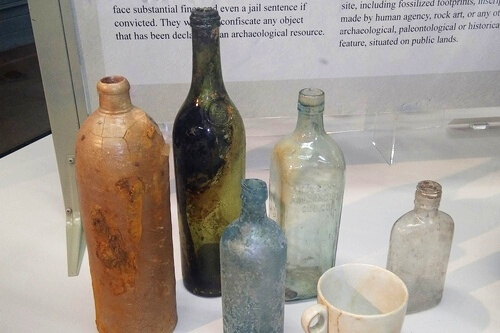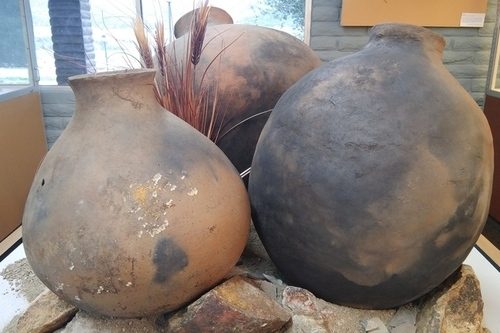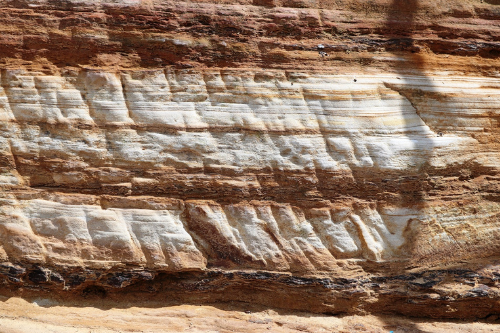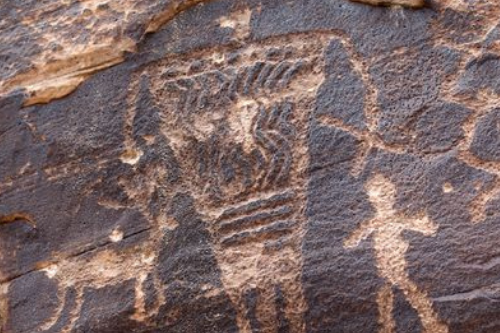
The Wonderful World of ROCK ART
This month, we are delving into the fascinating world of rock art. There are many kinds of rock art but they are all human-made and found on natural surfaces. Different types of rock art can be found all over the world and have been found on every continent, except for Antarctica. In archaeology, rock art is important to study because it can give deeper insight into the cultures that created them. Some of the more well-known types of rock art are pictographs, petroglyphs, and petroforms.
Pictographs

A pictograph is similar to a painting and is made by mixing minerals and wet substances like animal fat, oil or blood. The most commonly used colors are black, red, and white. Red paint is made from ground ochre, black paint is usually composed of charcoal, and white paint comes from clay or natural chalk. Animals and tools are commonly found images as well as handprints.
Petroglyphs

Petroglyphs, unlike pictographs, are engravings that are carved into rock. Tools like a hammerstone or sharpened rock would be used to remove unwanted stone and create the desired shapes and symbols. There are many different techniques for creating a petroglyph.
Petroforms
Petroforms are human-made shapes or patterns placed on open ground using large rocks. These are generally much larger than petroglyphs and pictographs and are thought to have many purposes. The placement of these rocks could represent burial or ritual sites, or perhaps have aided in navigation. Much is still unknown about rock art as it many times is highly symbolic.
Preserving Rock Art
Rock art, like other cultural heritage, need your protection. If you visit a rock art site, do not touch, paint, or climb upon the art. Protecting the past is important and these sites are precious.
Learn More
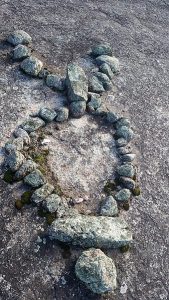
How would you like to see some of the most famous rock art sites from around the world, without leaving your house? The San Diego Archaeological Center is happy to present a new online exhibition Visions: Rock Art from Around the World. This community curated project gives participants a chance to feature their photographs of rock art with the world! The exhibition will be LIVE on the Center’s website soon.
This exhibition will be ongoing and we are still accepting submissions! You can submit your images on our Rock Art Submission Form.
To learn more about rock art, visit our Dr. Arty Fax’s Archy Facts blog and follow us on Facebook, Twitter, or Instagram.
Up Next
Thanks for tuning in. Come back again next month to learn about HISTORIC ARCHAEOLOGY.
By Jessica McPheters, Collections Manager


